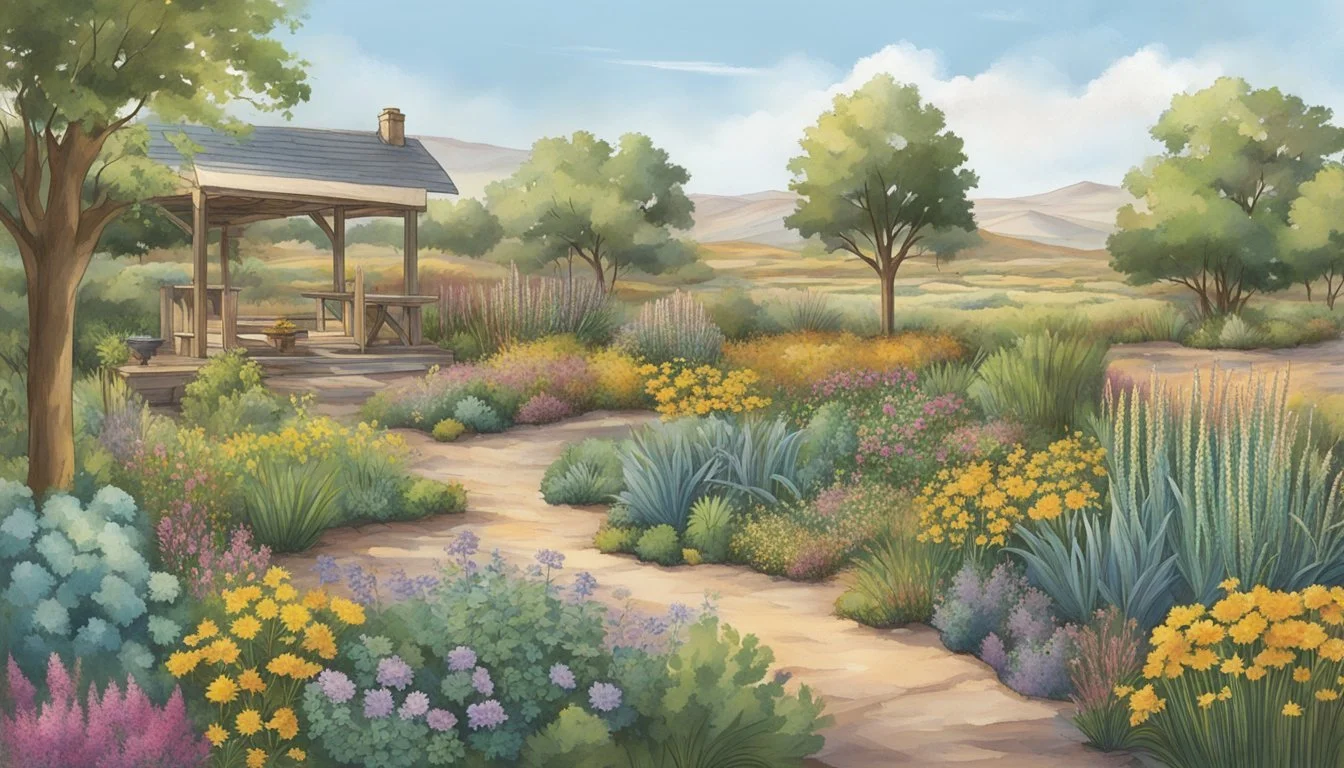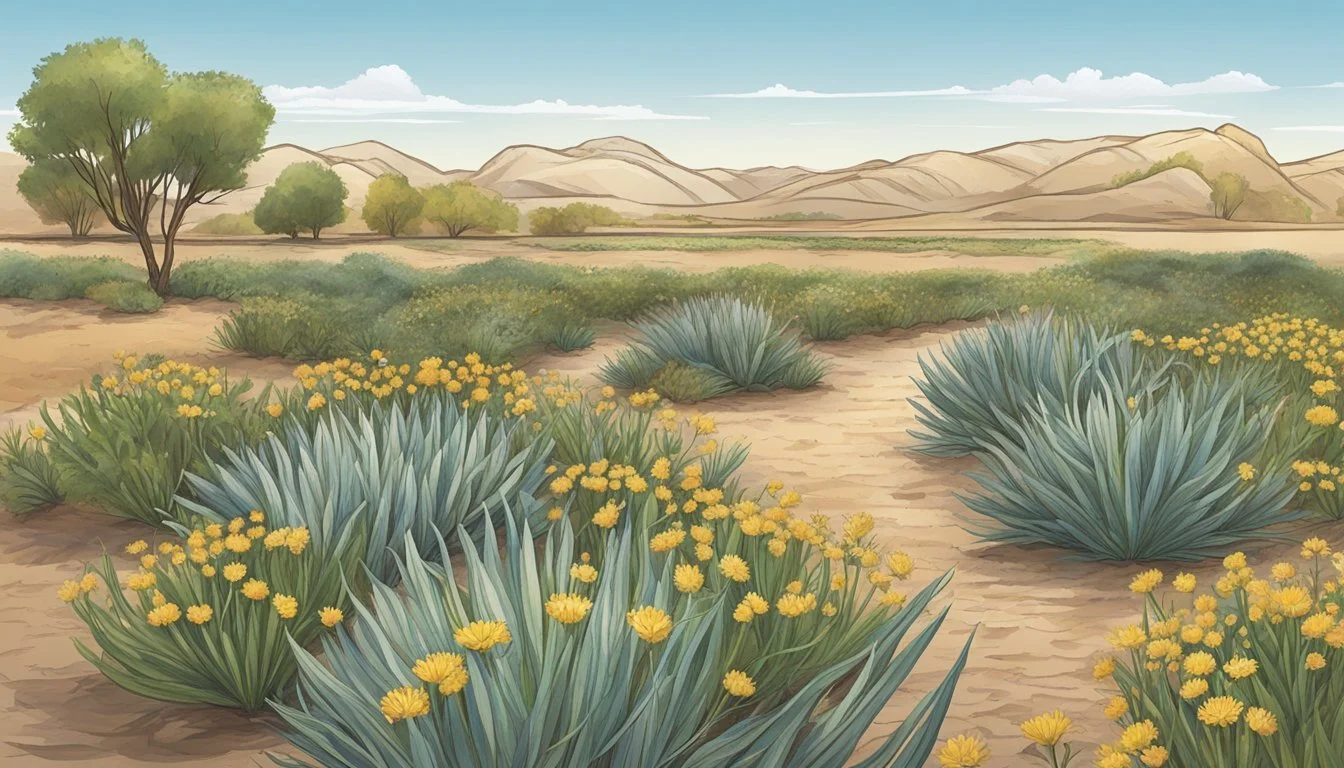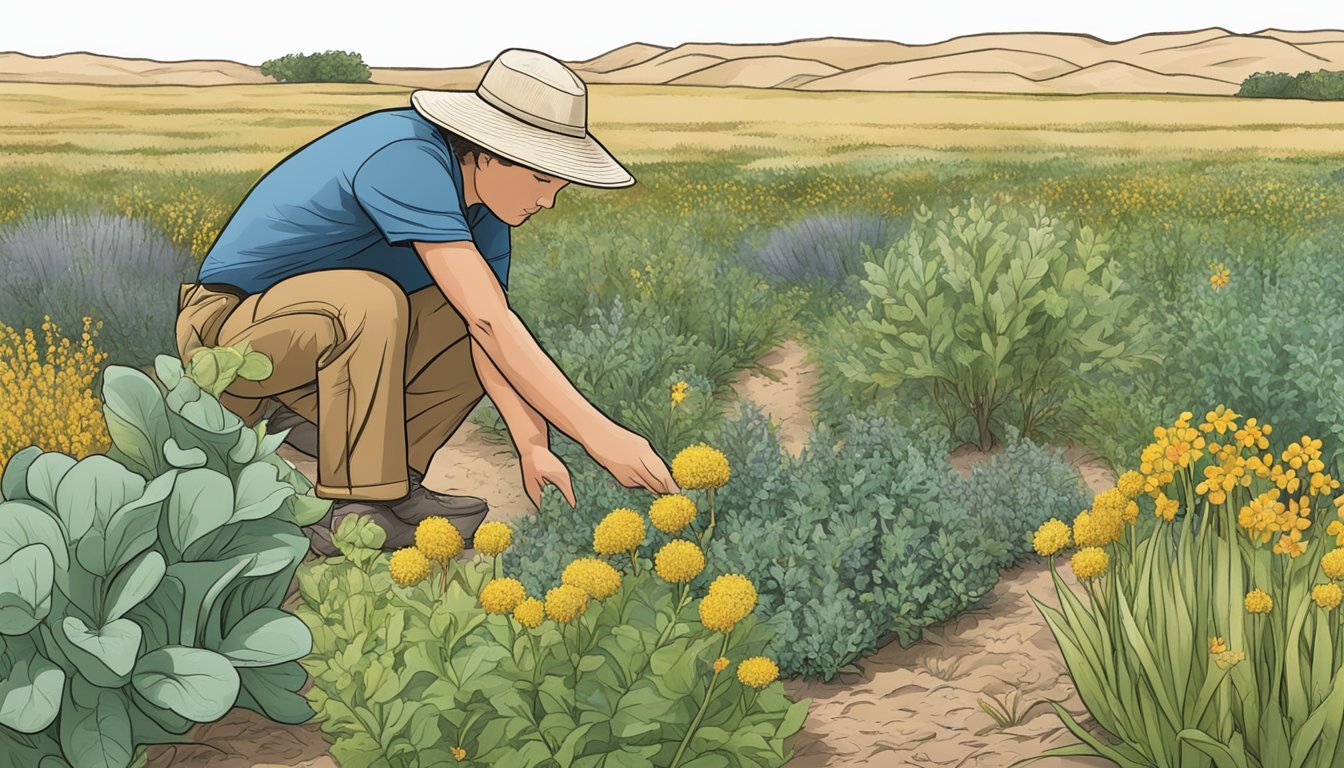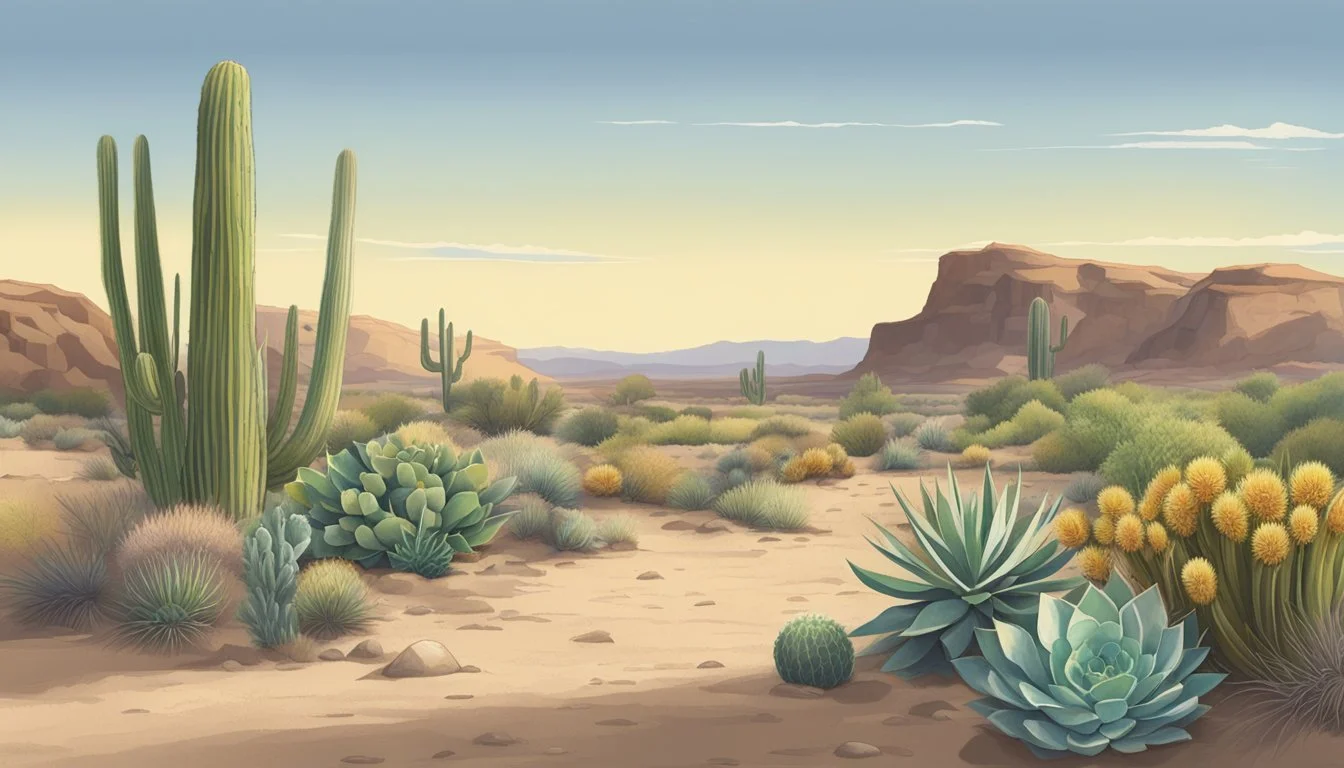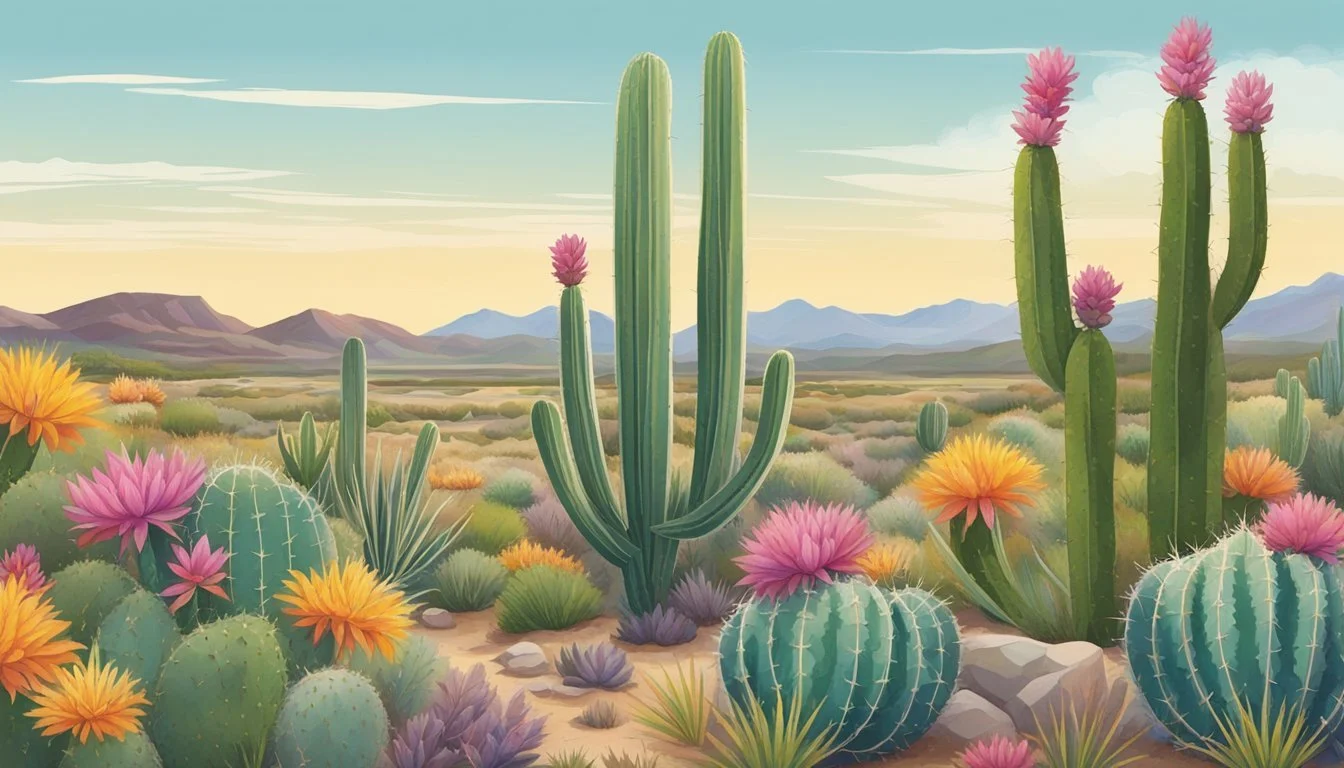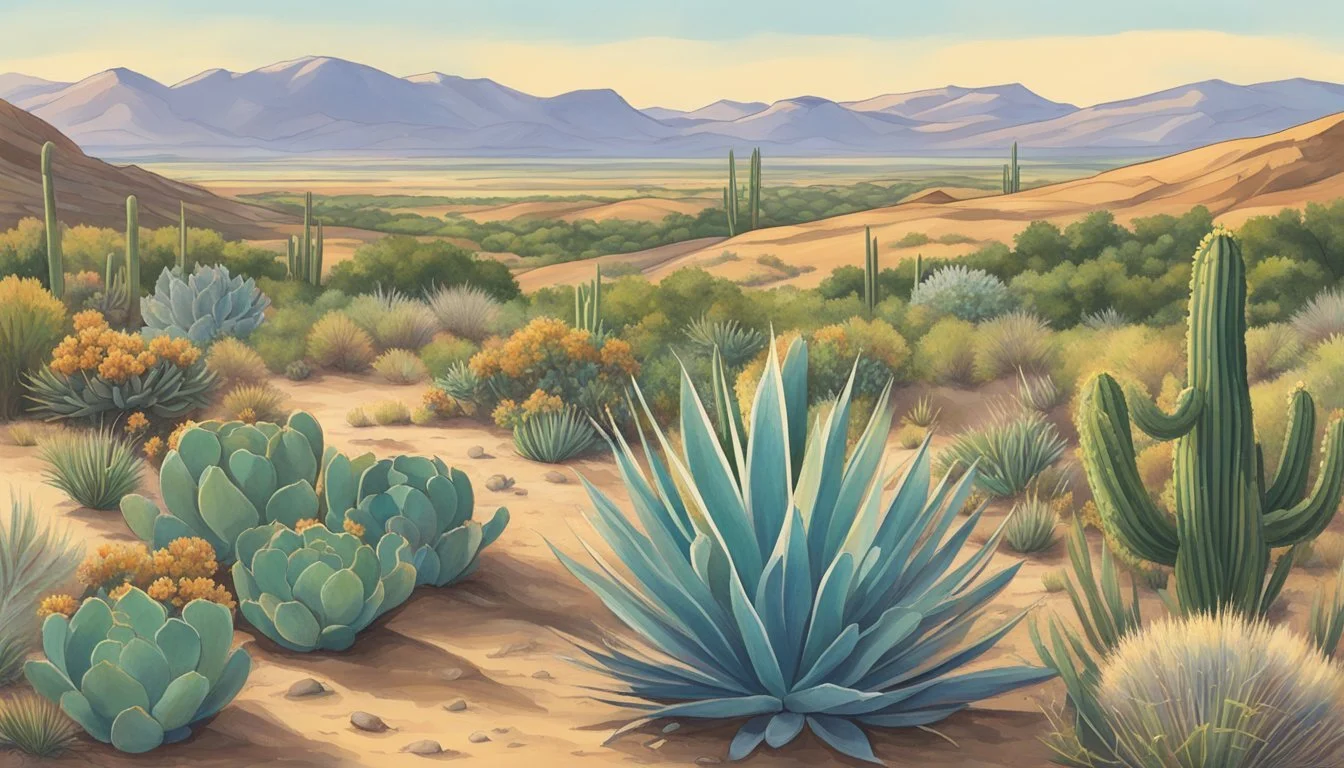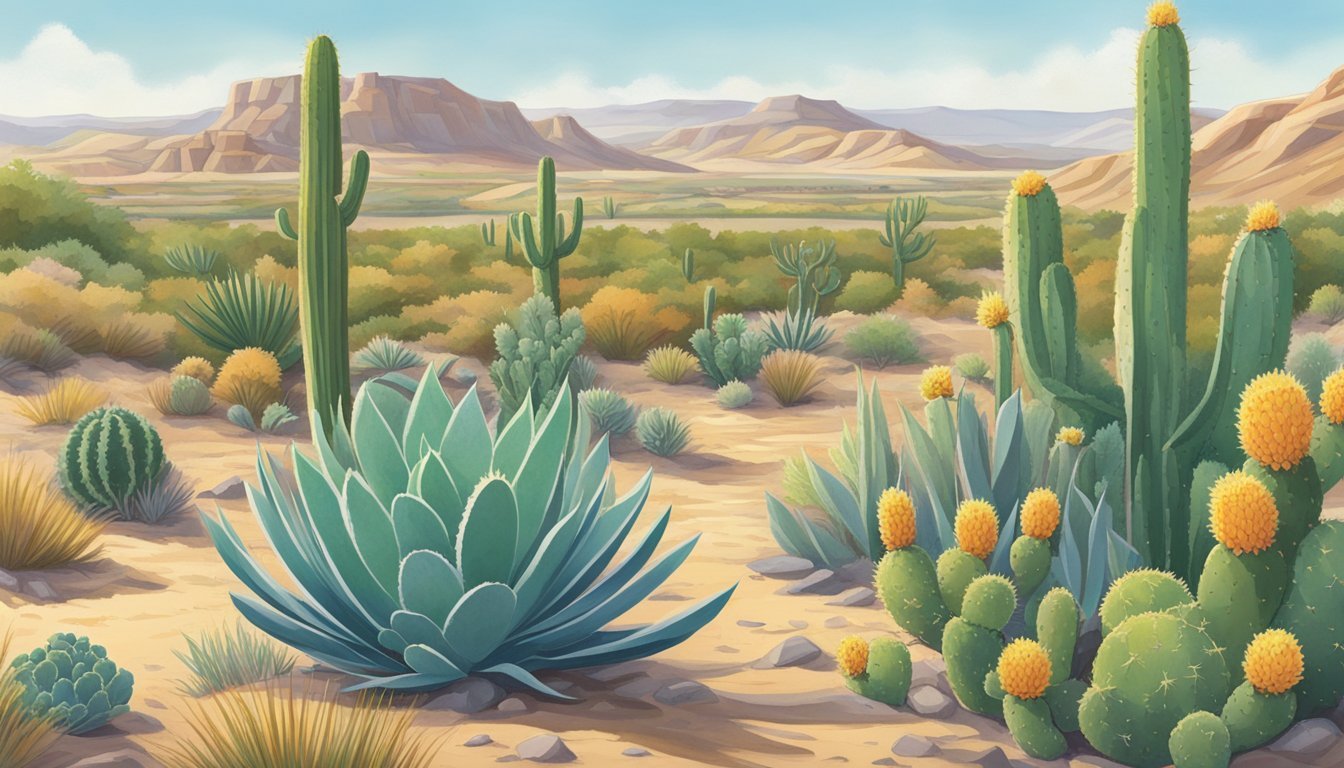Drought-Tolerant Plants in North Dakota
A Guide to Resilient Gardening
Gardening in North Dakota presents unique challenges due to its climate, marked by cold winters and periods of drought. Choosing the right plants for this environment is crucial, and drought-tolerant varieties offer a sustainable and efficient solution. These plants have adapted to thrive with minimal water, making them a smart choice for the discerning gardener and landscape designer. Incorporating drought-tolerant plants into garden design not only conserves water but also ensures a resilient and vibrant landscape even in drier conditions.
Drought-tolerant plants, such as the most drought tolerant alder evaluated in trials by North Dakota State University, provide practical benefits for North Dakota gardens and commercial landscapes. By selecting species that are naturally equipped to withstand water scarcity, landscapers and gardeners can reduce the need for irrigation. This approach aligns with eco-friendly landscaping practices and supports the natural ecosystem with plant selections that are well-suited to the local climate.
North Dakota’s native plants list includes a variety of species that can enhance garden aesthetics while being mindful of water use. For instance, residents can choose from North Dakota native plants that are proven to be resilient in the face of drought conditions, such as the fragrant sand verbena and white yarrow. These drought-tolerant plants not only endure the dry spells but also contribute to a diverse and healthy garden ecosystem. With careful planning, the fusion of functionality and beauty is achievable in creating drought-resistant gardens in North Dakota.
Benefits of Drought-Tolerant Plants
Drought-tolerant plants offer significant advantages to gardeners, particularly in regions like North Dakota where water conservation is a priority. These plants are accustomed to arid conditions and require less watering than their non-drought-tolerant counterparts, assisting in the preservation of this vital resource.
Low-Maintenance: Gardeners appreciate the low maintenance nature of these plants. Due to their adaptability to dry climates, they often require less care, thriving with minimal watering and feeding.
Eco-Friendly: Drought-tolerant plants contribute positively to the environment. By needing less water, there is a decreased demand on local water supplies. Moreover, these plants usually do not require chemical fertilizers or pesticides, thus reducing the risk of chemical runoff.
Benefits: Water Conservation
Explanation: Less frequent watering needed, conserves crucial water resources.
Benefits: Reduced Care
Explanation: Minimal upkeep compared to regular plants saves time and resources.
Benefits: Environmental Impact
Explanation: Fewer chemicals and less water used means a smaller ecological footprint.
Adaptations of these plants, like deep root systems or reduced leaf areas, confer inherent survival traits, allowing them to withstand the challenging climate of North Dakota. Their resistance to drought makes them a sensible choice for supporting sustainability efforts in gardening practices.
Furthermore, many drought-tolerant species are native to North Dakota, which means they play a crucial role in supporting local wildlife and maintaining biodiversity. Using these plants in landscaping helps sustain the native ecosystem, providing habitats and food sources for local fauna.
In summary, incorporating drought-tolerant plants into landscaping is a wise decision for those seeking a resilient, environmentally-conscious garden that aligns with North Dakota's climate and ecological considerations.
Understanding North Dakota's Climate
North Dakota's climate presents challenges for gardeners and landscapers due to its temperature extremes. Plant hardiness and seasonal adaptations are key considerations for successful cultivation.
Hardy Plants for Cold Winters
North Dakota is characterized by its cold winters, with temperatures that can plummet well below freezing. The hardiness zone for most of North Dakota ranges from zone 3 to zone 4, indicating the importance of selecting plants that can survive extreme cold. Gardeners are advised to look for species that are resilient in the face of frost and can withstand temperatures down to at least -40°F.
Full sun locations can be beneficial for certain cold-hardy plants, ensuring they receive enough energy during the short growing season.
Partial shade may be preferred for others, offering protection against the harsh conditions.
When preparing a garden or landscape in North Dakota, one must prioritize plants with proven hardiness to ensure survival through the winter season.
Plant Selection for Hot Summers
Despite the icy winters, North Dakota also experiences hot summers, with temperatures that can soar. During this time, plants are not only contending with heat but also potentially with drought-like conditions.
It's critical to choose plants that can adapt to full sun exposure and have a tolerance for occasional water scarcity.
Heat-tolerant plants typically have deep root systems and leaves that can retain moisture or reflect sunlight.
Whether for a flowerbed or a vegetable garden, consideration of the local climate is essential for a thriving summer garden. Specifically selecting plants for hot summers is as crucial as preparing for the frigid winters.
Essential Planting and Care Tips
Selecting drought-tolerant plants for North Dakota gardens requires careful attention to soil conditions, moisture levels, and diligent maintenance. Ensuring these plants thrive involves a disciplined approach to soil preparation, water usage, and the employment of suitable fertilizers.
Soil Preparation and Conditions
Drought-tolerant plants typically flourish in well-draining soil as they do not tolerate standing water. Gardeners should aim to enrich poor soil by incorporating organic matter, which enhances soil structure and fertility. Testing soil pH and adjusting it to meet the specific needs of the selected plant species is indispensable for optimum plant health.
Key Soil Conditions: Loose, well-draining, and rich in organic matter.
Soil Amendments: Add compost or peat moss to improve soil quality.
Irrigation and Water Usage
While drought-tolerant plants are adapted to survive with less water, establishing them requires consistent moisture levels during their initial growing phase. After establishment, irrigation can be scaled back significantly, with watering done infrequently but deeply to encourage deeper root growth.
Initial Watering: Regular to establish roots.
Mature Plant Watering: Deep and infrequent to promote resilience.
Fertilizers and Maintenance
Fertilizer use should be sparing, as drought-tolerant plants are generally well-adapted to poor soil conditions, and excessive feeding can encourage weak, water-dependent growth. Maintenance care includes pruning to remove dead or damaged tissue, thereby fostering robust and healthy plant development.
Fertilization: Use low-nitrogen, slow-release fertilizers.
Pruning: Annual or as needed to remove dead material and manage shape.
Selecting Native Plants
When landscaping in North Dakota, it's wise to consider native plants for their adaptability to local conditions. These species have evolved to thrive in the state's climate and soil, offering a resilient and water-efficient garden solution.
Native Shrubs
North Dakota's native shrubs are invaluable for creating structured landscapes that withstand the region's temperature extremes. Chokeberry (Aronia melanocarpa) provides dense foliage and vibrant fall colors, while the Indigo bush (Amorpha fruticosa), mentioned in Backyard Garden Lover, adds a touch of purple with its attractive flowers.
Native Grasses
Native grasses serve as the backbone of a drought-resistant garden. Notably hardy varieties include Big Bluestem (Andropogon gerardii) and Switchgrass (Panicum virgatum); both offer aesthetic appeal and habitat benefits. These grasses are highlighted on Gardenia.net as multi-season interest plants that are both sturdy and attractive.
Native Wildflowers
When it comes to adding color, native wildflowers are unparalleled. Blanket flower (Gaillardia aristata), detailed by NDSU's Dakota Gardener, delights with yellow and red blossoms and is known for its low water needs. Black-eyed Susan (Rudbeckia hirta) is another bold choice, offering golden yellow flowers that are often seen across North Dakota's plains.
Creating a Wildlife-Friendly Habitat
Creating a wildlife-friendly habitat in North Dakota involves incorporating drought-tolerant plants that serve the needs of various local species. This enhancement not only supports the biodiversity of the area but also fosters a sustainable environment for crucial pollinators and fauna.
Attracting Pollinators
To attract pollinators like bees, butterflies, and hummingbirds, it's essential to plant a variety of nectar-rich plants. Native flowers that are particularly appealing to pollinators include:
Purple Coneflower: Attracts bees and butterflies with its nectar and serves as a food source for birds with its seeds.
Black-eyed Susan: Provides nectar for pollinators and seeds for birds during the fall.
These drought-resistant plants not only conserve water but also provide essential resources for pollinators to thrive.
Supporting Local Fauna
In addition to pollinators, other wildlife such as deer, rabbits, and songbirds benefit from a habitat with native, drought-tolerant vegetation. Practices that support local fauna in North Dakota include:
Layering Plantings: Vertical layering of plants offers shelter and food sources across different heights for various species.
Including Keystone Species: Such as the Milkweed for Monarch butterflies, offering both a food source for the caterpillars and nectar for the adults.
By integrating these strategies with specific plant selections, gardeners can create a dynamic environment that supports a wide range of wildlife, sustaining the delicate balance of North Dakota's ecosystems.
Designing Your Drought-Tolerant Landscape
When designing a drought-tolerant landscape in North Dakota, selection and placement of plants are pivotal. Combinations of plants should provide visual appeal, while ground cover options decrease maintenance needs.
Garden Aesthetics and Plant Combinations
In crafting a beautiful and resilient garden in North Dakota's climate, one should aim for a variety of textures, colors, and forms. Plant combinations should be carefully considered to create year-round interest and harmony. For example, coneflowers paired with ornamental grasses offer a balance between floral pops and airy textures. These pairings not only enhance the garden's aesthetics but also support local wildlife, fostering a functional ecosystem.
Echinacea spp. (Coneflower): These are vibrant and drought-tolerant; they attract pollinators.
Schizachyrium scoparium (Little Bluestem): This native grass stands out with its rich foliage and resilience.
Low Maintenance Ground Cover Options
Integrating low-maintenance ground covers is a strategic aspect of drought-tolerant landscaping. These plants minimize the need for watering and weeding, creating a dense mat that inhibits weed growth. They thrive in North Dakota's challenging conditions, requiring minimal intervention once established.
Sedum spp. (Stonecrop): Stonecrops are succulents that can cover rocky, poor soil; they offer a variety of colors.
Thymus serpyllum (Creeping Thyme): This hardy plant offers aromatic foliage and tiny blossoms; it's also walkable, making it a practical choice for garden paths.
Linking planting schemes with low-maintenance ground cover options can significantly reduce the effort required to maintain a landscape, while ensuring that it remains beautiful and ecologically responsible throughout the seasons.
Popular Drought-Tolerant Plants for North Dakota
Selecting the right plants for North Dakota's climate can be a challenging task due to its extreme weather conditions. Drought-tolerant plants are essential for sustainable gardens and landscapes in this region. These plants require minimal watering and maintenance, making them ideal for the state's dry environment.
Shrubs and Small Trees
For those looking to enhance their garden with shrubs and small trees, several species stand out for their ability to thrive in dry conditions. Viburnums and Green Ash are known for their hardiness and adaptability to various soil types. Native shrubs, such as the resilient NDSU's recommended trees, are also excellent options for North Dakota landscapes, providing both beauty and environmental benefits.
Viburnums: Offer colorful flowers and can survive in full sun exposure.
Green Ash: Known for its hardiness in various climates.
Perennials and Flowers
North Dakota gardeners have a rich palette of perennials and flowers to choose from that can withstand drought. For instance, Yarrow, Penstemon (commonly known as Beardtongue), and Coneflower exhibit not only vibrant colors but also a remarkable ability to prosper with minimal watering. Other notable mentions include:
Lavender: Loved for its aroma and purple blooms, it thrives in full sun.
Allium: This hardy species requires low maintenance and can add dramatic flair with its spherical flowers.
Milkweed: Essential for monarch butterflies, it offers a hardy option for the garden.
Sedum: Known for their fleshy leaves, excellent in rock gardens or as ground cover.
Grasses and Ferns
Grasses and ferns can offer texture and contrast in a drought-tolerant garden. Big Bluestem and Panicum (a type of switchgrass) are native grasses that can thrive in North Dakota's harsh climate. They provide movement and life to the garden with minimal care required. Ferns, although not typically associated with dry habitats, do have varieties that can survive lower moisture levels:
Big Bluestem: A tall prairie grass that tolerates a variety of conditions.
Panicum: Switchgrass that provides stunning fall colors and supports local wildlife.
By incorporating these drought-tolerant plants into their gardens, North Dakota residents can create beautiful, sustainable landscapes that thrive in the state's unique climate.
Dealing with Weeds and Pests
In the challenging environment of North Dakota, managing weeds and pests in a drought-resistant garden requires specific strategies. Natural weed suppression and selecting pest-resistant plant varieties are effective for maintaining a healthy garden without relying heavily on water.
Natural Weed Management
Weeds compete with garden plants for water and nutrients, which is especially problematic during drought conditions. Natural weed management focuses on preventing weed growth and minimizing their impact. Methods include:
Mulching: Applying a 4-inch layer of mulch helps conserve soil moisture, reduces soil temperature, and prevents weeds. For example, the use of mulch around trees and shrubs can be shaped in a doughnut form extending to the dripline to thwart weed invasion as recommended by experts at NC State Extension.
Herbicides: In cases where weeds have already established, targeted herbicide treatments can suppress weed growth. Specific herbicides like Roundup can be effective, but should always be used judiciously to avoid environmental stress.
Mowing or Clipping: For large areas, mowing or clipping can control weeds and reduce seed production, hence preventing further spread.
Pest-resistant Varieties and Care
Choosing pest-resistant plant varieties is critical for reducing the vulnerability of your garden to pests like deer and rabbits, and ensuring the plants are drought-tolerant can make your garden even more resilient.
Deer and Rabbit Resistance: Certain plants naturally deter pests. For instance, choosing plants that are known to be deer-resistant can significantly reduce the likelihood of pest damage in the garden.
Healthy Garden Practices: Keeping plants healthy with proper care, including appropriate spacing and pruning, makes them less inviting to pests. Healthier plants are also more drought-tolerant and can withstand the adverse effects of both pests and drought conditions.
By focusing on these natural and preventive strategies, one can manage weeds and pests effectively in a North Dakota garden, even under drought conditions.
Resources and Further Learning
When considering gardening with native plants in North Dakota, understanding the USDA plant hardiness zone is crucial for ensuring that plant selections are well-suited to the local climate. The USDA's Drought Calculator offers valuable insights for effective water management and plant selection.
Educational Materials and Guides:
North Dakota State University (NDSU) provides comprehensive literature on landscaping with native species. Their publication, Recommended Trees for North Dakota, is an invaluable resource for selecting trees that thrive in the state's diverse conditions.
North Dakota Department of Agriculture offers an array of Drought Resources to assist with managing gardens during challenging dry spells.
Nurseries and Conservation Programs:
Local nurseries often have knowledgeable staff and a selection of native plants ideal for gardening in North Dakota's climate.
The North Dakota Petroleum Foundation runs a program titled "Planting for the Future," which promotes planting native species to rehabilitate land.
Community Involvement and Online Platforms:
For a practical approach to community-based tree management, the service available at North Dakota City Trees includes a database to explore cities and the tree species prevalent in community spaces.
General Recommendations:
It's recommended to consult local climate guides and seek advice from gardening clubs or university extension services to tailor gardening practices to the specificities of one’s locale in North Dakota.
By utilizing these resources, individuals can enhance their knowledge and effectively contribute to sustainable garden and landscape practices in North Dakota.
Frequently Asked Questions
Drought-tolerant plants are essential for maintaining a resilient garden in North Dakota's climate. These FAQs address the best plant choices for low-water gardening in the state.
What are some low maintenance perennials that are drought resistant in North Dakota?
Low maintenance perennials suitable for North Dakota include the prairie onion and white yarrow, which are known for their drought resistance and ability to thrive in the local climate.
Can you list evergreen plants that are tolerant to dry conditions in North Dakota?
Junipers and pine species are evergreens that typically withstand dry conditions well in North Dakota, staying green year-round without requiring excessive watering.
Which flowering trees are well-suited for the dry climate of North Dakota?
Flowering trees like the Valley Forge American Elm are recommended for North Dakota, as they are resilient, fast-growing, and have a high drought resistance.
What are the top native plants in North Dakota that can survive drought conditions?
Some of the top native plants that are adept at surviving drought conditions in North Dakota include the fragrant sand verbena and the indigo bush, which are well-adapted to the local climate and soil types.
Which bushes thrive in North Dakota's landscape with minimal water requirements?
The indigo bush (Amorpha fruticosa) is a native bush that thrives in North Dakota with minimal water, due to its inherent drought tolerance and ability to grow in various soil conditions.
What are the fastest growing, drought-resistant trees recommended for planting in North Dakota?
The Valley Forge American Elm is noted for its fast growth and drought resistance, making it an excellent choice for quick shade and environmental adaptability in North Dakota's landscapes.


